Not just another peak: Get your business ready for Black Friday and Cyber Monday
It’s that time of year again, complete with pumpkin spice lattes, sweater weather, and shoppers thinking about socially distant versions of their favorite holiday pastimes.
With Black Friday and Cyber Monday around the corner, many marketers are scrambling to figure out what to do during this year’s unprecedented holiday shopping season.
Updated on Oct 21, 2020
If you’re looking for Black Friday marketing and Cyber Monday sales inspiration, you’ve come to the right place. Keep reading to learn what trends defined 2019, how customers are adapting in our new home-centric reality, and what you can do to get your message to the right people at the right time.
Retail Today
Since the pandemic began, eCommerce has experienced an upswing, but now, as shopping reaches an all-time high online, the competition for customers is fiercer than ever. This year, it’s those retailers without a Black Friday marketing strategy who will be left scrambling for coveted traffic.
Are you wondering what you can do to stay relevant and attract shoppers online?
The answer is deceptively simple: create personalized multichannel experiences and acknowledge that 2020 isn’t like anything we’ve seen before.
Let’s dive into last year’s trends and explore how to enhance your Cyber Monday sales and Black Friday marketing strategy.
Since their inception in 2005, Cyber Monday sales have set new records each year. In 2019, sales reached $9.4 billion. But with store capacity limits, increased brick-and-mortar closures, and limited store hours in 2020, many retailers who relied on in-store foot traffic — either partially or totally — are having to rethink their sales approach for the first time in a long time.
The ‘60-Day Challenge’
If you’ve read self-help books, you’ll know that most research claims it takes 20 to 30 days to form a new habit and another 60 days to make that desired change permanent.
In many parts of the world, life in quarantine has lasted for 60 days (or longer) — turning online shopping into an established consumer behavior. As more offline shoppers embrace online buying, Black Friday sales are beginning to feel more like Groundhog Day.
A new home-centric reality has affected how shoppers interact with retailers — both in-person and online. Rapidly changing consumer habits mean marketers need to increase their focus on tracking and measuring trends to respond to emerging customer segments with timely offers and relevant messaging.
While many segments that existed before the pandemic will likely stick around, such as discount-seekers and high-end shoppers, marketers are seeing new personas that are beginning to emerge, like “curbside pickup” and “same-day delivery” shoppers.
These changes pose a radical challenge for traditional retailers with separate (often siloed) eCommerce websites and brick-and-mortar storefronts — but if the pandemic has taught us anything, it’s that a house divided will fall.
The solution: taking a unified approach to Cyber Monday sales and Black Friday marketing campaigns.
2019 Season Recap
Let’s examine how shoppers behaved in 2019. The BF & CM retail report, created with benchmarks from Insider’s global partners, can help marketers micro-segment their audiences to understand and engage with them using creative Black Friday campaigns and Cyber Monday sales plays.
1. Mobile is the clear winner.
Between 2018 and 2019, for both Black Friday and Cyber Monday, mobile platforms saw an overall increase: 24.87% on Black Friday and 29% on Cyber Monday. Desktop followed (with 8.11% on BF and 6.95% on CM). Tablets, however, saw negative growth (-33.46% on BF and -25.99% on CM).
To sum things up: People are most likely to shop on a mobile device and desktop sites. This trend is likely to continue this year.
2. Conversions are up everywhere.
All devices performed better in 2019 on Black Friday and Cyber Monday. Tablets saw the biggest year-over-year increase. Meanwhile, desktops netted the highest CR, followed by tablets and mobile web.
To sum things up: Tablet users seem to know what they want to buy. Marketers can segment this user base, attracting and converting them with personalized UI and rewards.
3. They are just ‘window shopping.’
The mobile web recorded the highest session numbers, lowest conversion rates, and the highest bounce rates.
To sum things up: While shoppers use mobile phones primarily to evaluate their shopping options, the actual purchasing happens on a desktop. Knowing this, marketers can tailor their mobile ad messaging and promotions to foster more conversions on the mobile web.
4. Mobile conversion is 2x faster.
If you compare the average session duration on a desktop or mobile website to the duration on a mobile app, the app takes the lead. The time spent and seconds taken to convert on a mobile app are twice as fast.
To sum things up: Understanding that time is a priority for online customers during Black Friday and Cyber Monday, marketers can launch “app download” campaigns to foster better sales results in 2020.
A Crash Course in & Cyber Monday Sales and Creative Black Friday Campaigns
It’s never too early to get your creative Black Friday strategy in motion. For the shopper, a bounce is just a click, tap, or swipe away. It’s critical for retailers to have a plan to stand out from the crowd and grab shoppers’ attention.
Let’s dive into the dynamics of this holiday shopping period:
- The Thanksgiving season is a short sale period, so marketers only have a small window of opportunity.
- Competition is stiff, because every retailer is out to woo the customer.
- Mobile is becoming the preferred platform for online shoppers for evaluating their options, so it’s imperative to get your mobile strategy right to maximize brand interactions and sales during this period.
To gain a competitive edge, start planning your Black Friday marketing campaigns in advance. Start thinking about what kind of content your audience is expecting and how to step up your visual storytelling.
Take the following areas into consideration when creating your Cyber Sales and Black Friday marketing strategy:
- Data and statistics
- Market trends
- Tech-led engagement opportunities
- Innovative marketing campaigns for new and existing customers
- More shopping moving online
- Managing higher traffic headed to your website
Cyber Monday and Black Friday Sales Tips
- One and not done: Turn one-time shoppers into repeat customers
eCommerce companies need to get familiar with a new shopper profile that has emerged during the pandemic. As countries went into lockdown, a large number of consumers turned to online buying for the first time. But over time, they discovered the ease of shopping and comparing products and prices online.
For marketers, these consumers transitioned from the Awareness stage to the Consideration stage. But as lockdowns ease, will these users relapse? How do marketers capture their attention and shift them toward online shopping? How do they bring them to the funnel’s final (Conversion) stage and turn them into repeat, loyal customers?
The upcoming Black Friday and Cyber Monday shopping season is an ideal time to reach and convert these part-time shoppers.
Solution for Marketers:
A good way for marketers to identify and reach these users is to segment and connect with them by using targeted notifications. Insider’s Customer Journey Orchestration, an AI-driven customer journey-building tool, enables companies to reach out to shoppers using their preferred channels: web push notifications, app push notifications, emails, and personalized on-site layouts.
How it works in real-time:
Let’s consider the example of an eCommerce company that witnessed a sudden spike in shopping traffic during the peak of the pandemic. Everything from groceries and electronics to athleisure was flying off the shelves. The company realized that a big chunk of these customers were first-time shoppers, and it didn’t want to lose them.
The company created a tailor-made marketing funnel strategy to engage and convert these new customers. Step one was to segment first-time shoppers into a unique cluster. Next, came the engagement process. Marketers began the conversion journey by sending web push notifications to users, offering discounts and free shipping. If a customer took no action, they received an email informing them about the company’s available products and discounts.
If a user reacts positively to the notifications and lands on the website, they are served a personalized site — reflecting products based on their interests as well as refreshing categories to display new products during each subsequent session. This turns a shopper’s retail experience into a dynamic and customized journey, resulting in increased conversion rates.
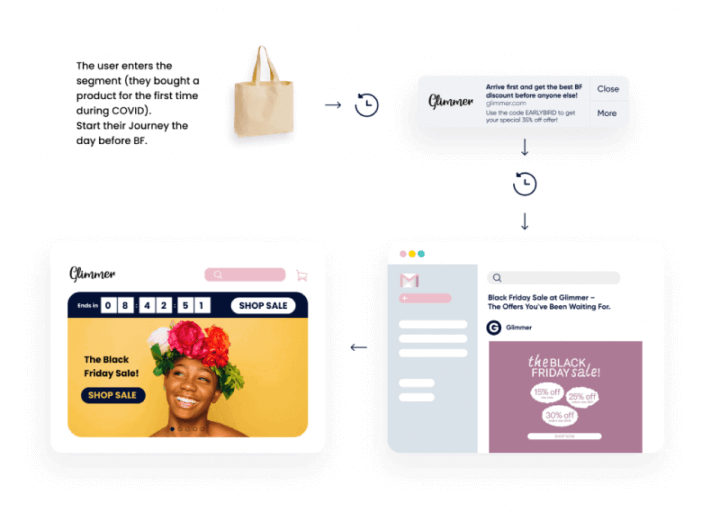
2. Rise and shine: Be seen, heard, and noticed by the right customer segment.
As retailers go into marketing overdrive during the Black Friday/Cyber Monday shopping season, the volume of communication can get overwhelming. Brands compete to catch the attention of the same consumer segments. Each attempts to outdo the other via advertising, communicating, and doling out discounts. To cut through the noise, your brand needs to be seen, heard, and noticed by your target audience.
Solution for Marketers:
What if a marketer could optimize their ad spend by reaching out specifically to those consumers who are most likely to buy? That way, not a dollar would be spent on wooing a wrong target audience. It sounds like fantasy, but it isn’t.
Insider’s Predictive Audience (PA) gives retailers the full bang for their advertising buck. The AI-enabled product uses historical behavioral trends and predicted future behavior to target their advertisements to only those customers who are most likely to convert.
The result: Reduced Customer Acquisition Costs (CAC), along with higher Return on Ad Spend (ROAS) and Lifetime Value (LTV).
How it works in real-time:
It’s the Black Friday shopping season. An electronics retailer wants to reach out to high-net-worth customers to increase sales for its new product: an 81-inch high-definition LED TV. After all, the holiday shopping season is the best time for companies to hit their sales targets. To do so, it’s always better to engage with customers who are highly likely to convert, rather than those who’re still at the top of the funnel.
The company realizes that creating a generic ad for Facebook or AdWords will not reach the high-value customers they intend to target. Instead, marketers use PAA to identify the right prospective customer segment. This segment is then engaged using personalized notifications and emails, informing them about the specs of the product and the safe, customized delivery and installation options they can select. Eventually, with these on-site messaging and personalization tweaks, converting new users becomes easier.
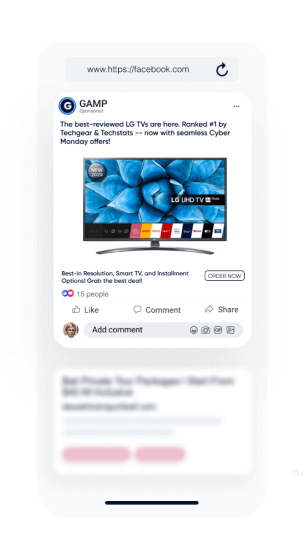
3. Create urgency, cut down on cart abandonment.
Cart abandonment is a factor that eCommerce companies constantly struggle to reduce. Research by the Baymard Institute found that 70% of online transactions don’t get completed. The Black Friday and Cyber Monday shopping season fares no better: three-fourths of shoppers abandon their carts across devices. How do you convert abandoners into shoppers?
Solution for Marketers:
The best way for marketers to reduce cart abandonment is to create a sense of urgency around a product. Make the FOMO (fear of missing out) factor kick in. Insider’s Social Proof messaging is tailor-made for marketers looking to build exigency. It works in two ways:
- Letting users know about the popularity of a product.
- Informing them that stocks are running out.
If a marketer backs up Social Proof messaging with Insider’s Mobile App Notifications, cart abandonment rates can be further reduced. This platform sends conversion push notifications to users who abandon the application from the payment page, just before they confirm a purchase. These notifications offer incentives — like a money-back guarantee — to users if they complete the purchase.
How it works in real-time:
A sports brand has launched a new running shoe and wants to hit a high sales target during the BF/CM shopping gala. A few days prior to the weekend, the company posts a banner on its product page: “600 people are viewing this item right now.” The idea is to let consumers know that there’s a lot of interest in the product, and loads of users are checking it out.
As the shopping weekend gets underway, consumers know that products get sold twice as quickly. To tap into this understanding, the sports brand posts another banner on the page: “Only 10 items left in stock.” This creates a double-edged sense of urgency around the shoes, motivating users to purchase immediately.
There may be instances when a consumer adds the shoe to her shopping cart and then has second thoughts about purchasing it. Conversion push notifications are a handy tool for marketers to help change the intention of users who abandon a purchase at the last stage. With these notifications, marketers can offer incentives — like 100% Secure Payment or a Money Back Guarantee — to get users to rethink their purchase decision.
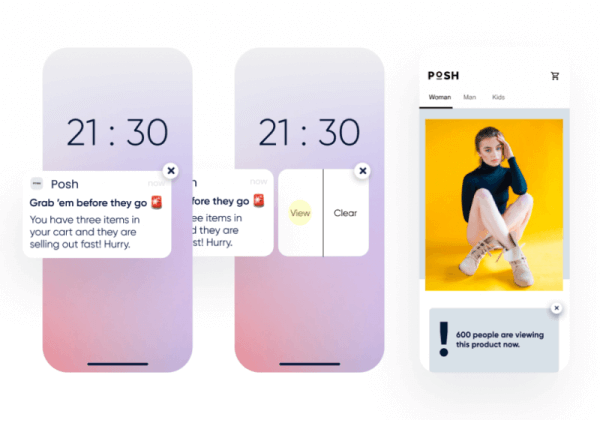
4. Recommend right: Offer relevant products to grab customer attention.
If a user is buying a pair of tennis shoes, why not encourage them to add a pair of racquets and tennis balls to the cart as well? Or, if a user goes online to purchase a baby cot, recommend a suitable mattress and baby pillow to boost cross-product sales.
Solution for Marketers:
Insider’s AI-backed Smart Recommender encourages buyers to purchase more than they had set out to buy. It does so by serving a personalized web page to users — based on their past browsing history and highlighting top-selling products — to showcase product categories that fit their interests and needs.
The tool works in two ways to maximize Black Friday/Cyber Monday performance:
- It makes add-on purchase suggestions on the cart checkout page. They are usually less-expensive items that customers buy without much monetary consideration.
- More expensive related items are suggested on the product page while customers are still making their purchase decisions.
eCommerce players like Amazon have raised the bar when it comes to product recommendations for online shoppers. But marketers are left asking a critical question: Which is the best recommendation to provide to users?
Smart Recommender has the answers ready. It enables companies to serve up personalized recommendations using a variety of strategies, including:
- Top-selling products
- Trending products
- Products with the highest discounts
- Substitute products
- Location-based top sellers
Marketers can test to find the right-fit recommendation for their products.
How it works in real-time:
Let’s think about the travel industry. A website runs special promos for specific destinations if the ticketing is confirmed during the Black Friday/Cyber Monday promotion.
A business executive lands on a travel website to book a flight ticket from Madrid to Paris. The website not only books their flight, but also recommends the best-suited hotels for them that are in proximity to the workplace. The business trip falls near a weekend, and an analysis of the executive’s travel patterns shows they might extend the trip to explore places near Paris. The website shows the best fares for Nice and adds some hotel recommendations as well. One flight booking multiplied into four transactions for the website.
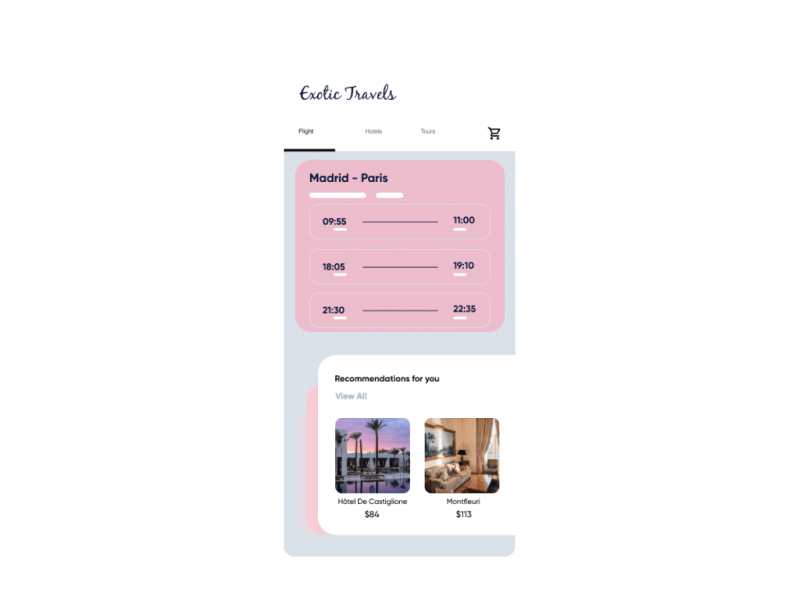
5. Convert Black Friday and Cyber Monday’s new web visitors into leads.
Being the top shopping season of the year, the BF/CM weekend attracts a lot of one-time online shoppers looking to cash in on discounts and offers. Once the shopping event ends, these shoppers might just sink back into anonymity, leaving online marketers unable to reach them. This situation leaves companies with a four-day window to collect leads on these visitors. They must act quickly and effectively.
Solution for Marketers:
Insider’s gamification tool, Wheel of Fortune, helps convert new web visitors into leads that marketers can nurture into customers over time. It works like the name suggests: Visitors spin a wheel, enter their email details, and have a chance to win a holiday deal.
It’s a win-win situation for both the company and the consumer. Marketers can witness their email database grow in real time. They can then engage with these users and convert them into leads. For shoppers, the game offers an added chance to snag extra savings.
How it works in real time:
An eCommerce retailer is expecting a sharp increase in consumer traffic to its website during the BF/CM shopping season. The company also knows that a big chunk of these visitors will be one-time buyers, lured by the lucrative discount deals that are inspired by the sale season.
The retail company wants to expand its consumer base, and converting BF/CM one-time buyers into future leads is a great way to start. The company opts for a gamification tool, using a fun experience to get buyers to provide their contact details. Using the Wheel of Fortune tool, shoppers spin the wheel, enter their email, and win a discount or a chance for a holiday trip to Ibiza! While the shoppers get a shot at heading to Ibiza, the marketers build their subscriber base.
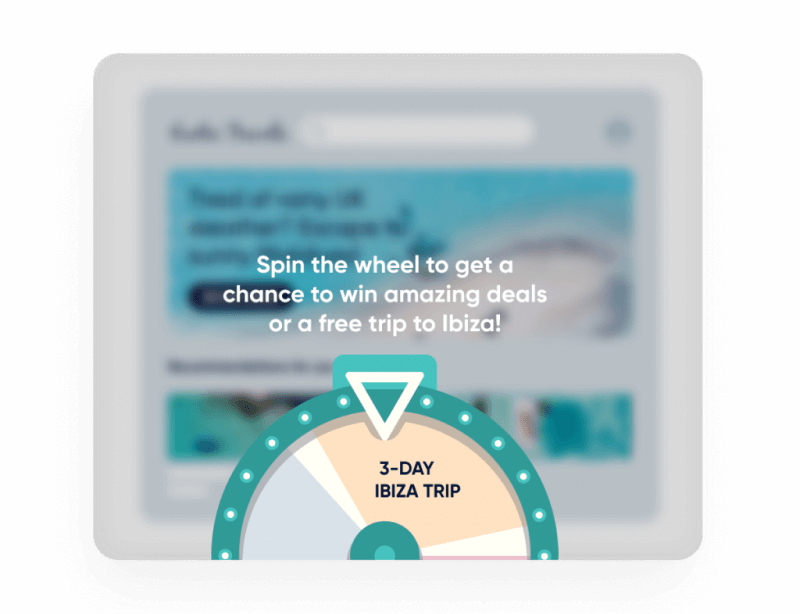
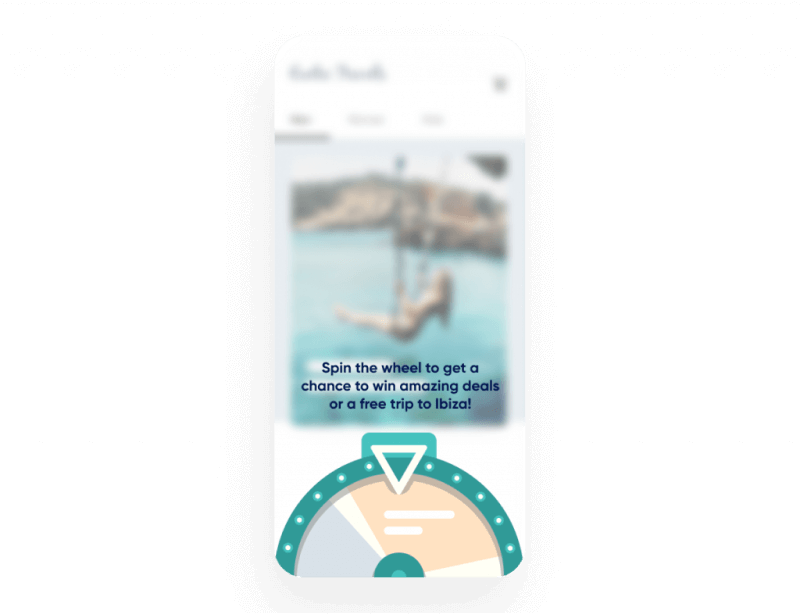
Conclusion
The pandemic has completely changed the dynamics of shopping in 2020, causing physical, in-store shopping to lose its luster. Marketers need to keep up with this paradigm shift in consumer behavior and shopping-going-digital as they prepare their sales strategies for the upcoming Black Friday shopping season. They need to engage their consumers quickly across all channels in order to stay on top of the competition.
Are you ready to take on the holiday shopping rush? We are here for you at every step of your growth journey. Connect with us for a personalized demo.



















